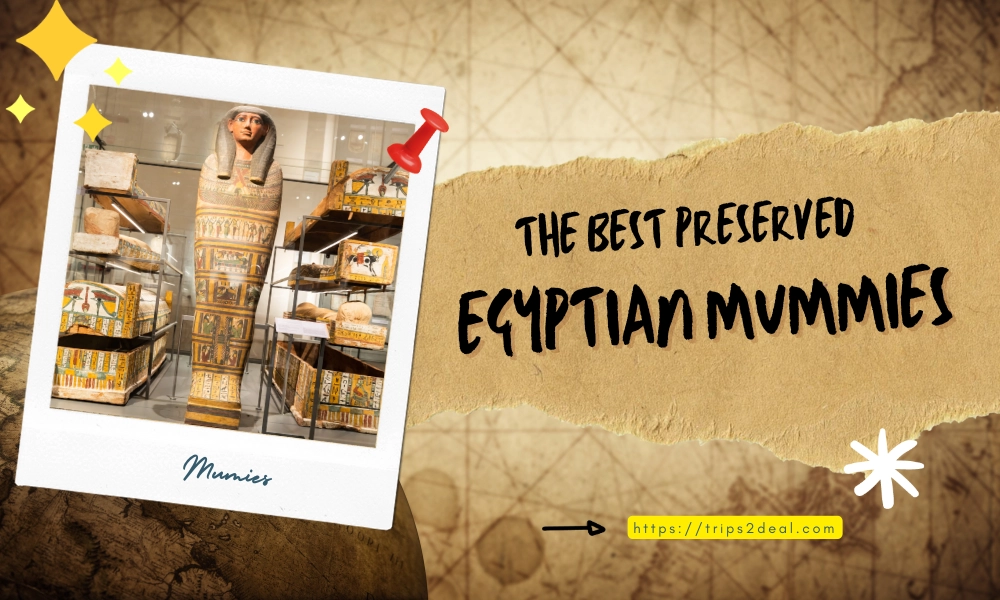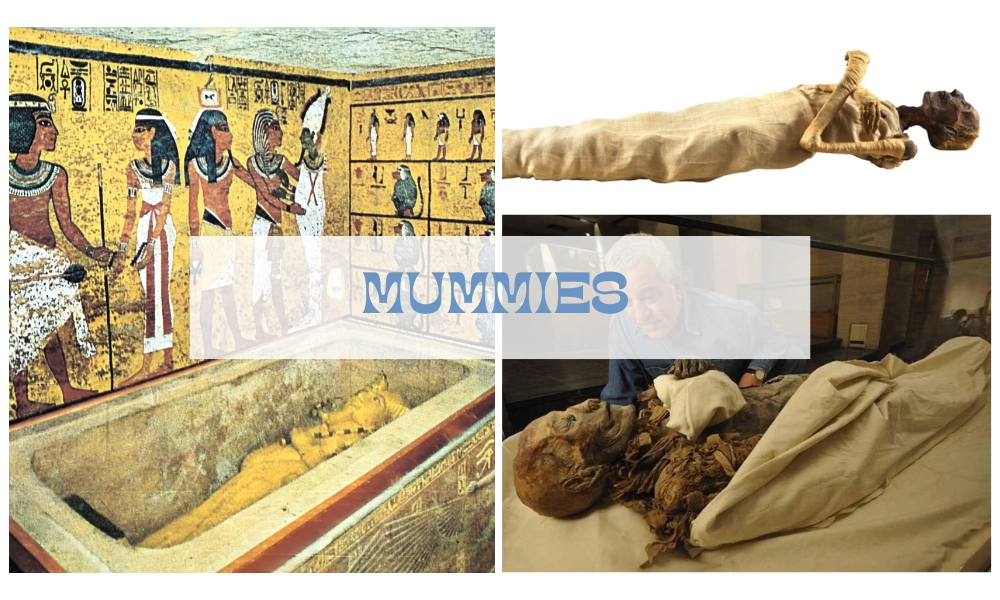Blogs

The Best Preserved Egyptian Mummies
Egyptian mummies are a considerable element of the ancient Egyptian legacy and civilization. For quite a long time, the old Egyptians became the best at preservation, protecting their dead in a mission for everlasting life. In the old Egyptian era, mummies were considered to protect human structures and to preserve the afterlife.
Ancient Times Egyptian Mummy Preservation Method :
The prospective mummy was set in natron (normally happening salt) and left to dry for 40 days. After the tissue was dried out, the body was enveloped by heaps of cloth, between which ministers put special necklaces to help the recently expired in life following death. Some of the mummies were preserved in luxuries to ensure that they were in comfort and were often buried with jewelry, furniture, and reserves. Mummies were not only humans but animals were also mummified for their ritualistic importance.
Opening Up the Mysteries of the Best Preserved Mummy
Explore the fascinating world of ancient Egyptians best-preserved mummies, with some of the most significant, unique, and notable ones listed below:
- Tutankhamun (Ruler Tut)
Maybe the most renowned mummy, Tutankhamun's burial place held a stash of fortunes and bits of knowledge about regal life. Tutankhamun was the thirteenth pharaoh of the eighteenth Tradition of the New Realm of Egypt, making his mummy more than 3,300 years of age. Tutankhamun's mummy is the most illustrious mummy to have been seen as altogether undisturbed. His mummy was found in the Valley of the King Luxor.
- Ramses II (The Great)
A fantastic ruler, Ramses II's mummy displayed the fastidious imitativeness of mummification. Ramses the Great is one of the most famous pharaohs of Old Egypt. He was known for his tactical endeavors that extended Egypt's lines, but he is primarily known for his building manifestations, like the Ramesseum and the Abu Simple Sanctuary, among others.
- Hatshepsut
Hatshepsut, perhaps one of the Egyptians' most unmistakable female figures, ruled for quite some time. Hatshepsut carried extraordinary abundance and creativity to her territory. She supported one of Egypt's best-exchanging undertakings, bringing back gold, dark, and incense. Student of history Joyce Tyldesley expressed that Thutmose III might have requested public landmarks to Hatshepsut and her accomplishments to be changed or obliterated to put her in a lower position of co-official, meaning he could guarantee that regal progression ran straightforwardly from Thutmose II to Thutmose III with practically no impedance.

What Makes Tutankhamen the Best-Preserved Egyptian Mummy
Utilizing exceptional cycles, the Egyptians eliminated all dampness from the body, leaving just a dried structure that would not handily rot. Tutankhamun's appearance was protected by extraordinary methods. The old Egyptians followed a "recipe" when they preserved an individual. In the wake of the elimination of the mind and interior organs, a salt called natron was utilized to dry the body.
Disclosing the Secret of the Past
The investigation uncovered hints of creature fats, beeswax, vegetable oils, and bitumen alongside different plant pitches—fixings that were most likely blended and warmed to form balms. Their properties made it especially easy for them to recuperate from earthenware vessels, even after thousands of years.



